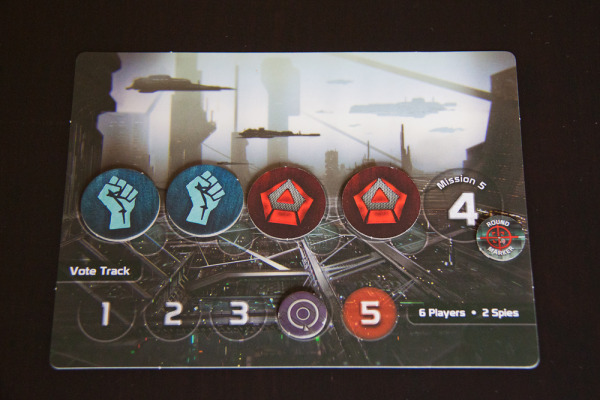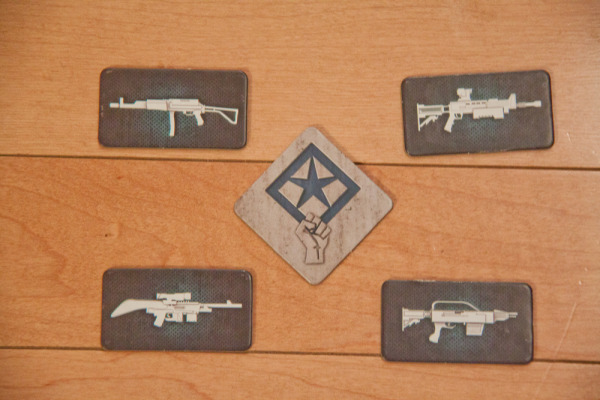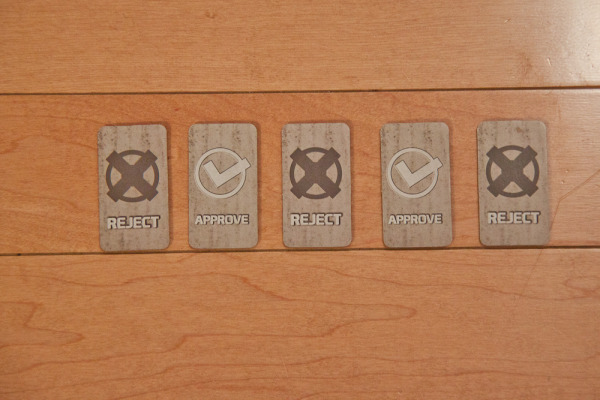

The Resistance review – Irresistibly simple social gaming
How do you know whom to trust? Can you rely on your ability to call a bluff? The statistical chance of them being the good guy based on the information at hand? The knowledge of how your friends act when they’re nervous? The Resistance is a social game that puts all these skills to a test, resulting in a tense and exhilarating contest of bluffing and deduction that fits nicely within half an hour and ruins any trust that existed between 5-10 people.
In a distant dystopian future, exactly the one we’ve seen in Fahrenheit 451, The Matrix or Equilibrium a small group of resistance fighters are plotting the downfall of the oppressive Big Brother government. A series of undercover missions should do the trick, but government spies have infiltrated the Resistance and they aim to sabotage any attempts to damage the regime.
How it works
In Resistance each player plays the role of either a Spy or a Resistance member. The game consists of a series of missions – each mission requires a certain number of people. A rotating “team leader” selects the team for the job and then all players vote on team composition. If the majority approves the team – a mission commences – each player on a mission receives two cards – “success” and “fail”. Loyal Resistance must play success, however a spy on a mission may play a failure card instead. The cards are shuffled (so that it is unclear who contributed which card) and revealed. If no “fail” cards were played – the mission is a success and is scored for the Resistance. Otherwise – the mission was compromised and is scored for the Spies. The first side to either succeed on or sabotage three missions wins the game.
How it plays
The Resistance builds on the principles of classic hidden role games such as Mafia or Werewolf but improves the formula drastically with two tweaks. First one is that there is no elimination in the game – every player has a chance to keep persuading others they are NOT a spy. It does wonders for keeping everyone engaged and taking an active part. The other one is a wonderful mechanic of fail/success cards that opens up a rich field for bluffing and misdirection on spy’s part. Do you go for the easy route – failing the mission but drawing suspicion? Or do you play along to garner trust of others? Analysis that Resistance members have to do is even more excruciating. While the Spies know who each player is, Resistance players are left to their deduction and trust in others’ reasoning. It creates an exhilarating environment of uncertainty and grasping at straws as you look for solid clues where there are few or none.
How it feels
The great thing about Resistance is that the most active participation is not through the voting or through playing the cards during missions. It is the deliberations and accusations that each player gets to indulge in that contain the meat of the game. The calculated uncertainty, the careful observation of others’ mannerisms and voting patterns – the game lends itself very well to a wide variety of playing styles. Those who like to think can find endless considerations to take into account while those who rely on hunches can find ample support for their theories (objectivity is another matter).
The game keeps each player engaged both through the discussions and the voting and it is equally enjoyable for both Spies and Resistance. It also succeeds greatly at delivering the entire experience in very manageable time – few games will go longer than half an hour.
The base game comes with a built-in “Plot Thickens” expansion that offers additional cards that introduce advanced complexity through unique card effects allowing more control of events in the game and exchange of information. These are great for when you got tired of the base Resistance, but the game is built on such a solid and flexibly foundation that it has great longevity even without these.
In Conclusion
Its’ greatest success is giving the spotlight to the players and only providing rudimentary game mechanics that allow people to focus on each other. Accommodating from 5 to 10 players and being such a breeze, this is a great social game that can organically become a memorable part of a fun party or a solid addition to a dedicated game night.




Comments are Disabled